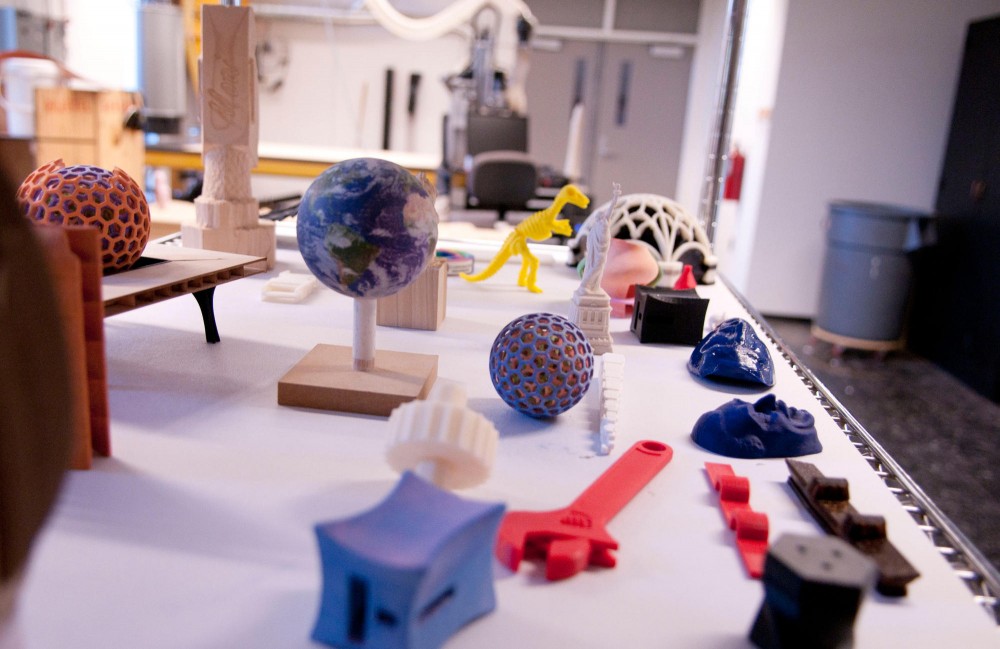A new University of Minnesota laboratory is helping College of Design students rapidly forge architectural marvels, intricate landscapes and fully-functional tools.
Dubbed the DigiFabLab, the new Rapson Hall facility molds sculptures in a fraction of the time it takes students to craft them by hand, said Kevin Groenke a coordinator at the UniversityâÄôs College of Design.
The lab, which opened Oct. 14, is available to students most of the week, and allows them to use laser cutters, 3-D printers and other high-tech design tools, he said.
Laser cutters produce wood carvings with complex details in about two hours, markedly faster than the weeks it takes to hand-cut them, said Justin Kindelspire, the labâÄôs manager.
Students can use computer programs to create patterns for a carving machine called a router, which follows blueprints to automatically trace 3-D designs into blocks of wood. Kindelspire uses the router to cut topographical landscapes.
Large 3-D printers can produce complex plastic shapes quickly, though its capabilities are sometimes limited by shape and size. The printer is filled with molten plastic and it builds desired objects layer by layer
Although the College of Design already owned some of the equipment used at the lab, it received more than $50,000 in donated 3-D printers from Stratasys, an Eden Prairie-based technology company.
Jesse Roitenberg, a manager at the company, said Stratasys made the donation in hopes that student projects will result in new patents created with the technology.
âÄúI canâÄôt wait to see the creativity that will come out of the DigiFabLab,âÄù Roitenberg said.
The rest of the funding for the lab âÄî $400,000 âÄî came from the UniversityâÄôs Provost Office.
About $150,000 was spent on necessary infrastructure in Rapson to house the lab, something that frustrated Groenke.
Vital electrical supplies had to be fed from the adjacent Mechanical Engineering building at a âÄúconsiderable expense,âÄù he said. The remainder had to be spent on sound insulation and glass panels not previously setup at Rapson, and to relocate equipment.
Students learn how to use the equipment outside of class on their own time, Kindelspire said, adding that the labâÄôs staff helps them master the equipment.
âÄúWe want to help them make things the average student couldnâÄôt make by hand,âÄù he said.
Groenke said the popularity of 3-D printing has increased in recent years, and the lab is mostly used by architecture students, in addition to those studying design and landscaping.
The lab is open to all College of Design students, who fund it through student fees. Widespread use from other departments is discouraged, but the college makes exceptions for some engineering students who need the lab for certain projects.
âÄúWe are currently exploring offering courses and fabrication services to the broader University and private sector partners,âÄù Groenke said.


